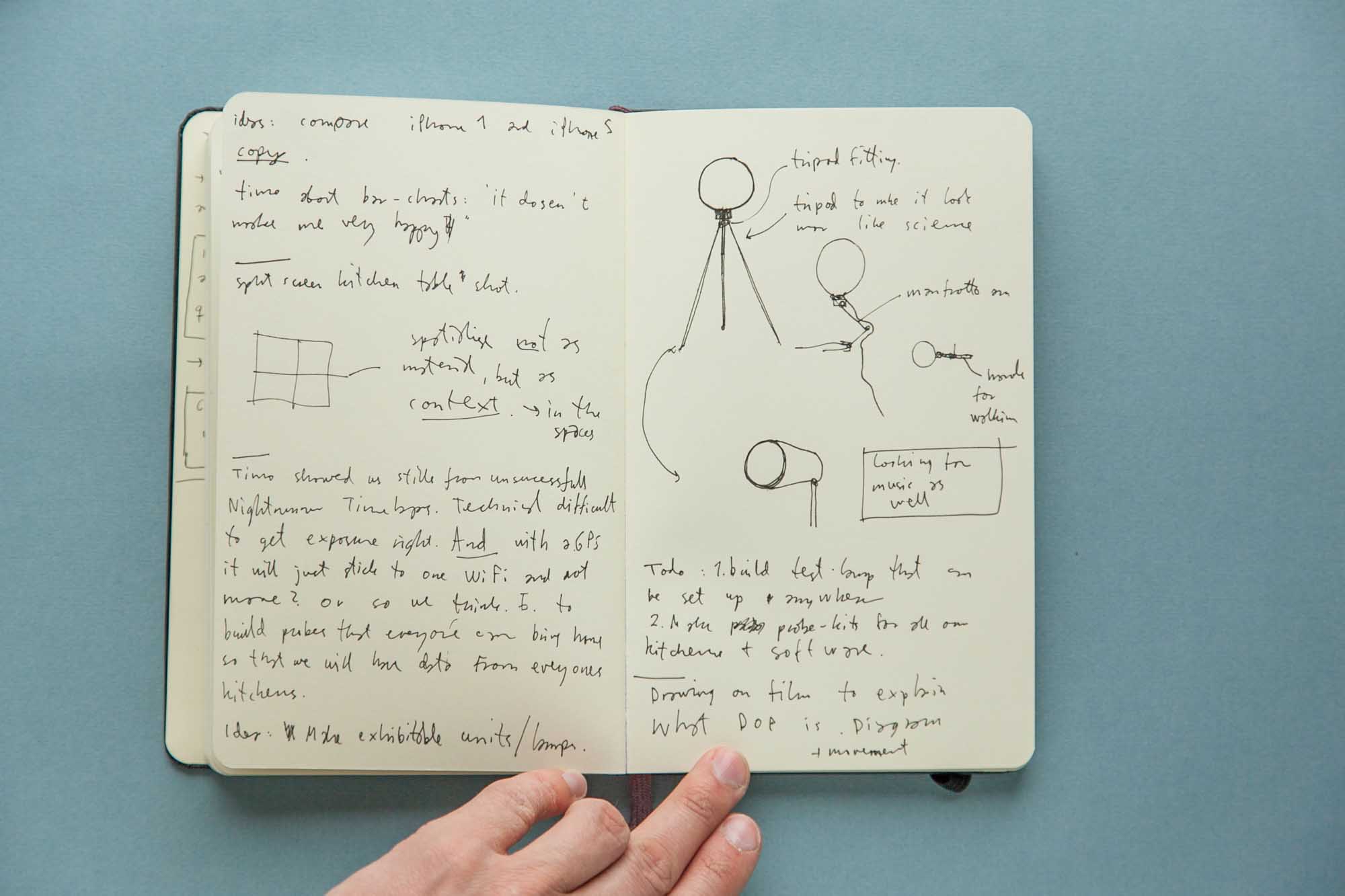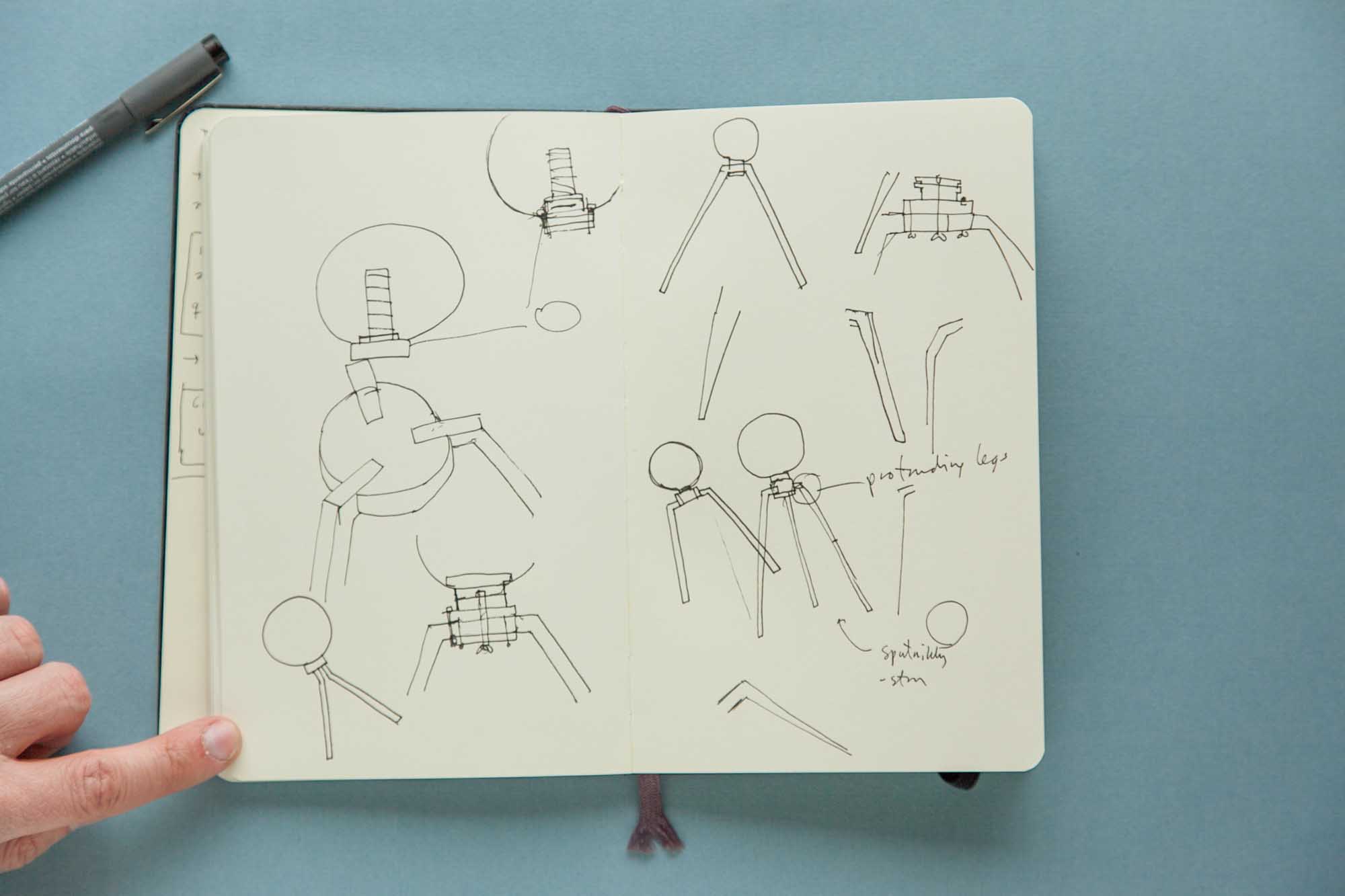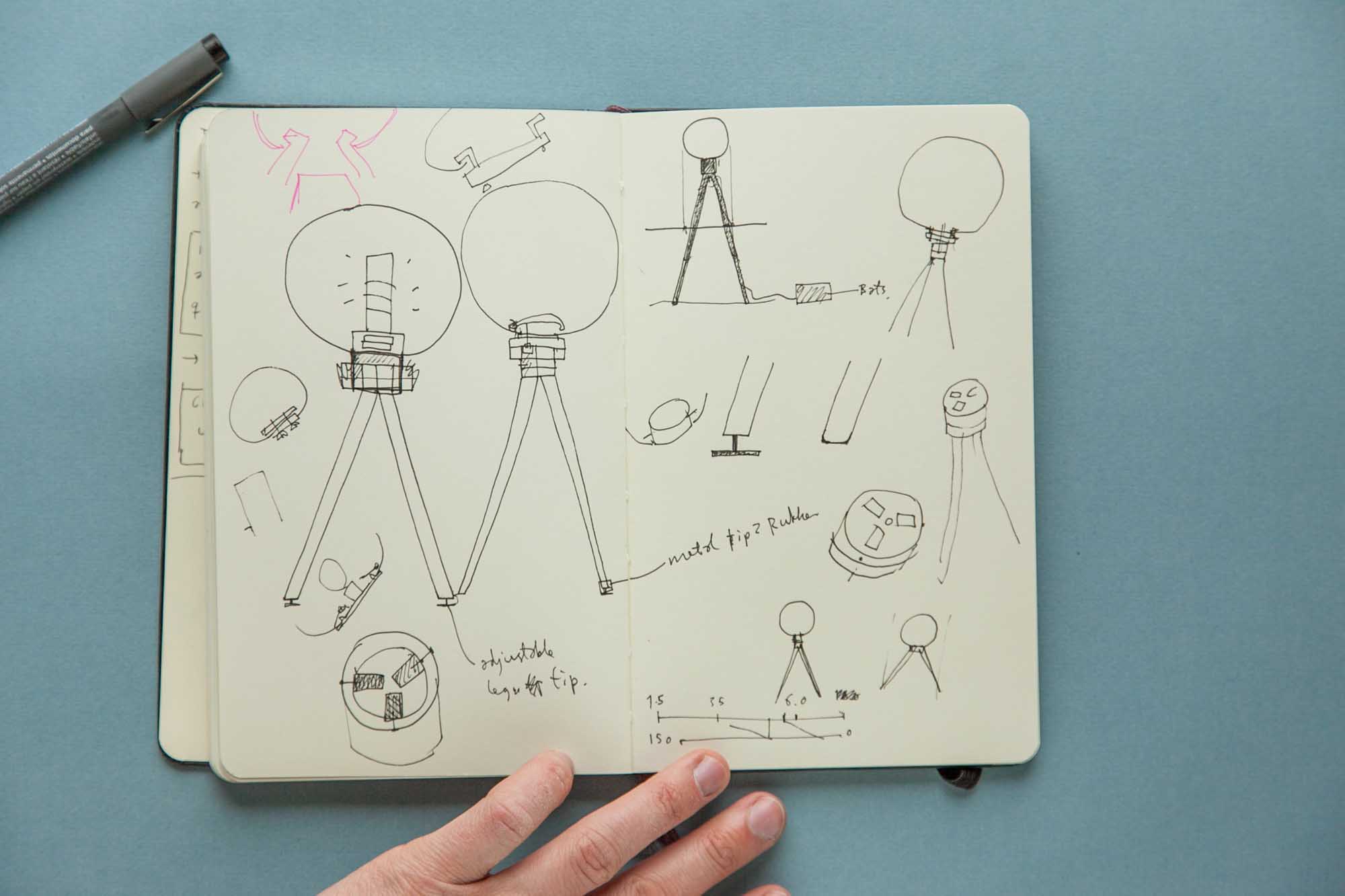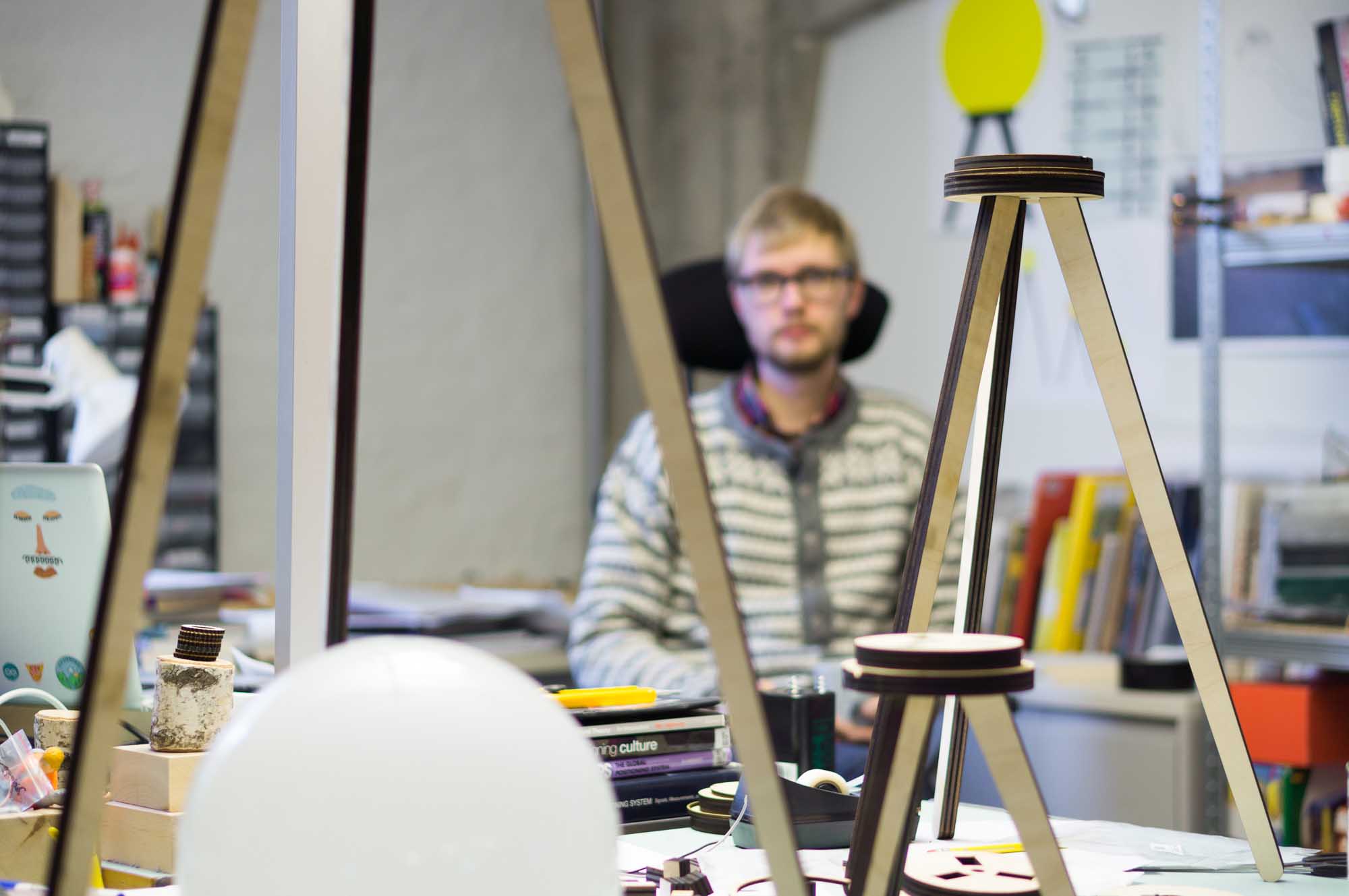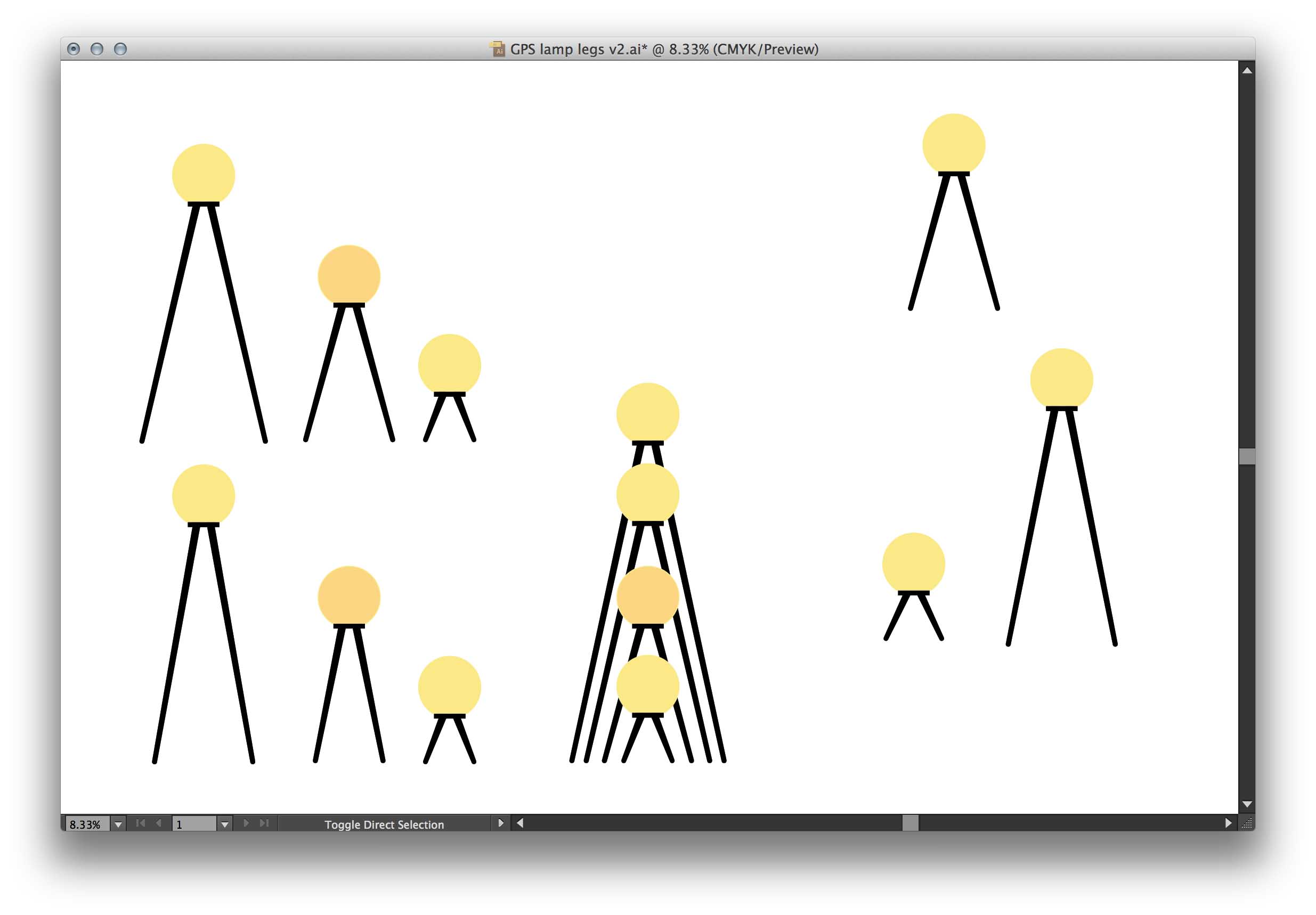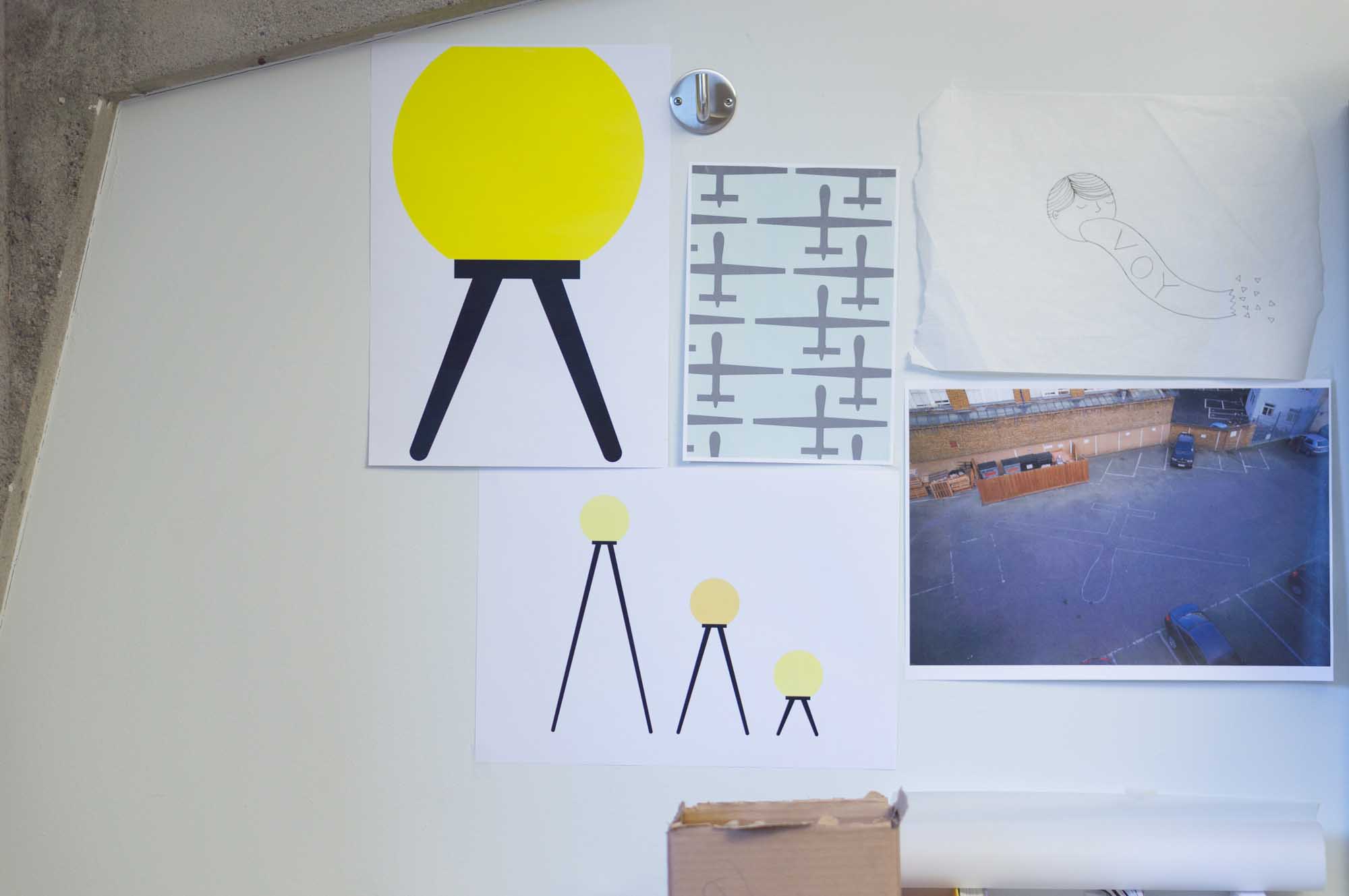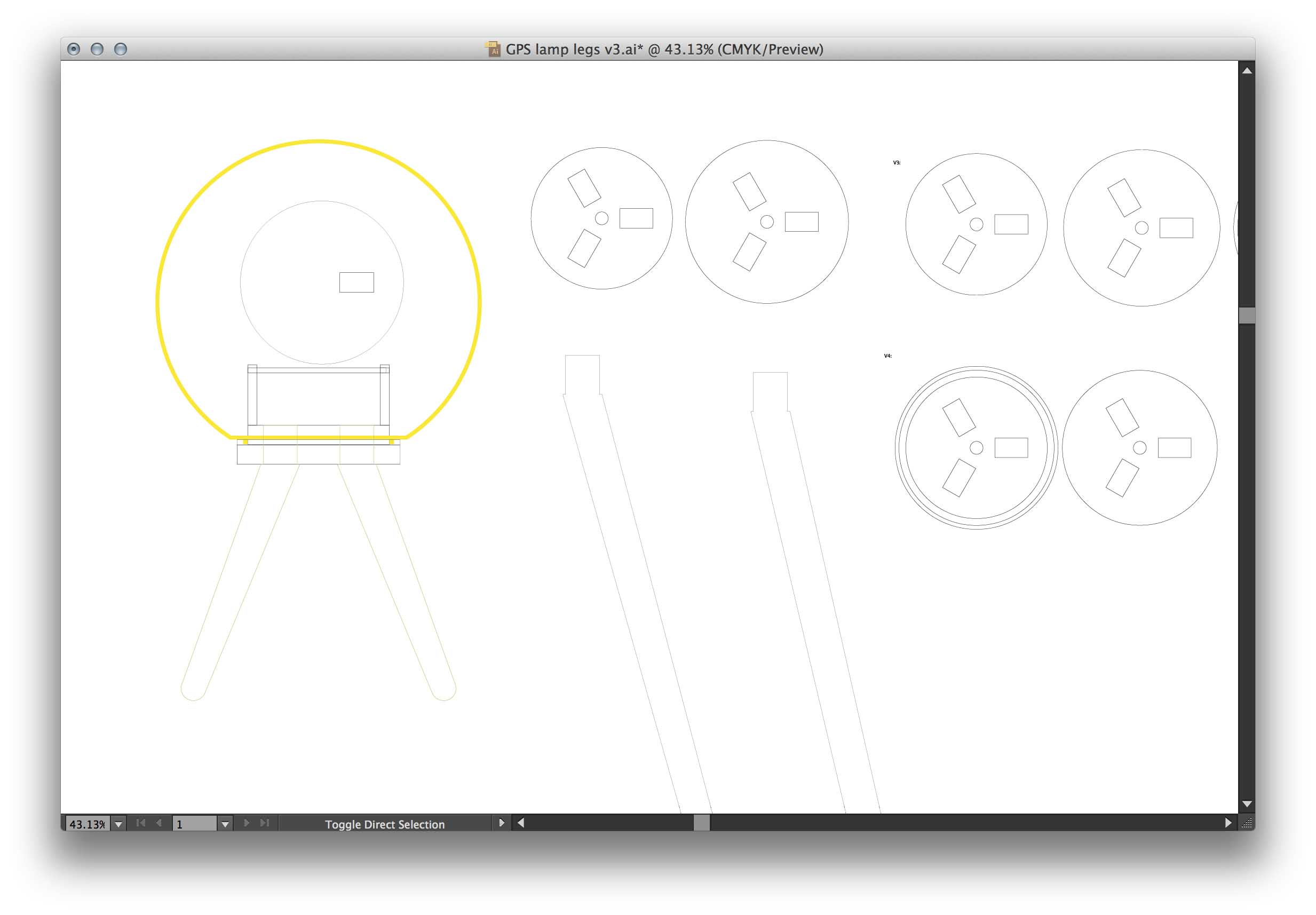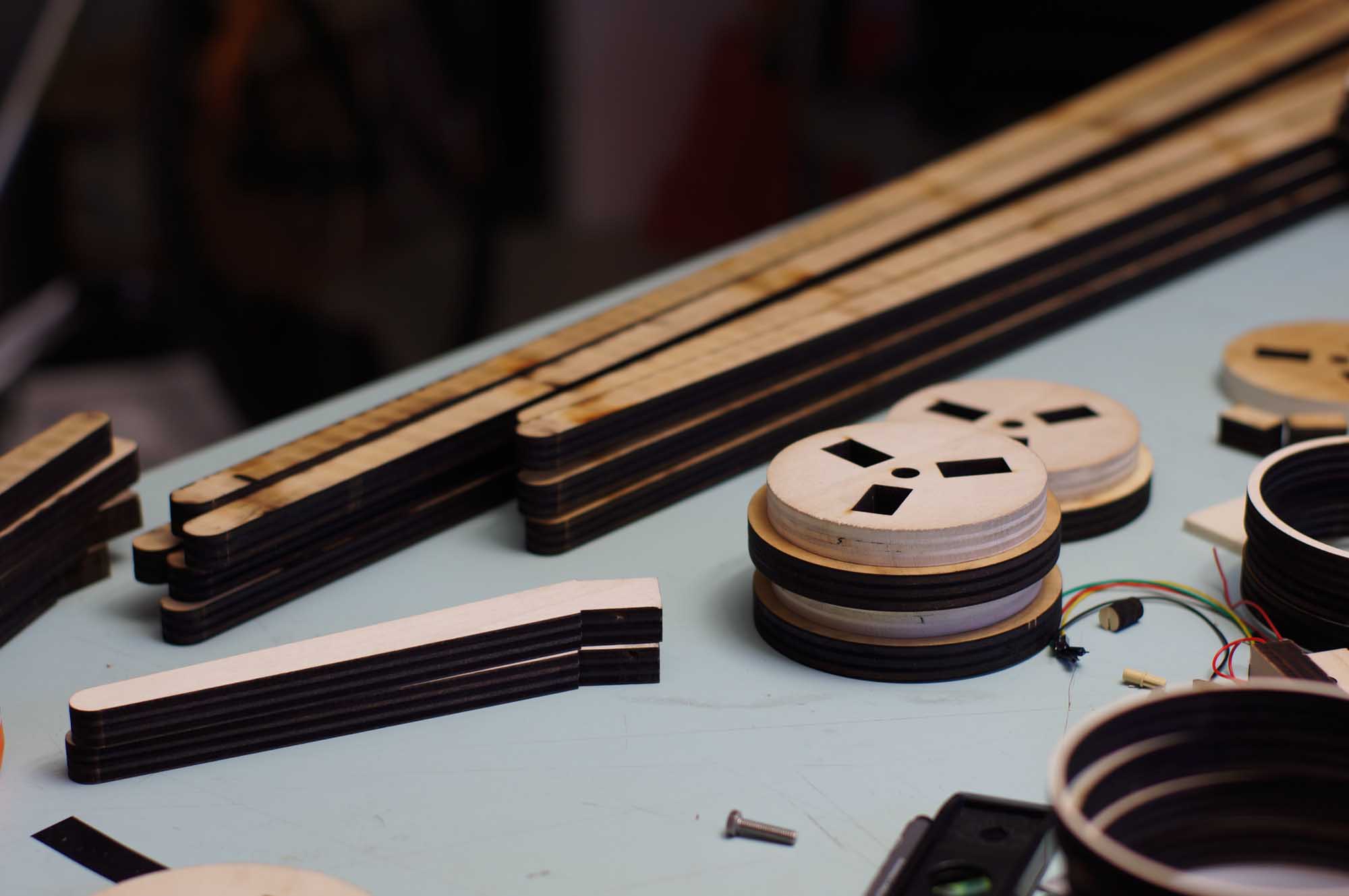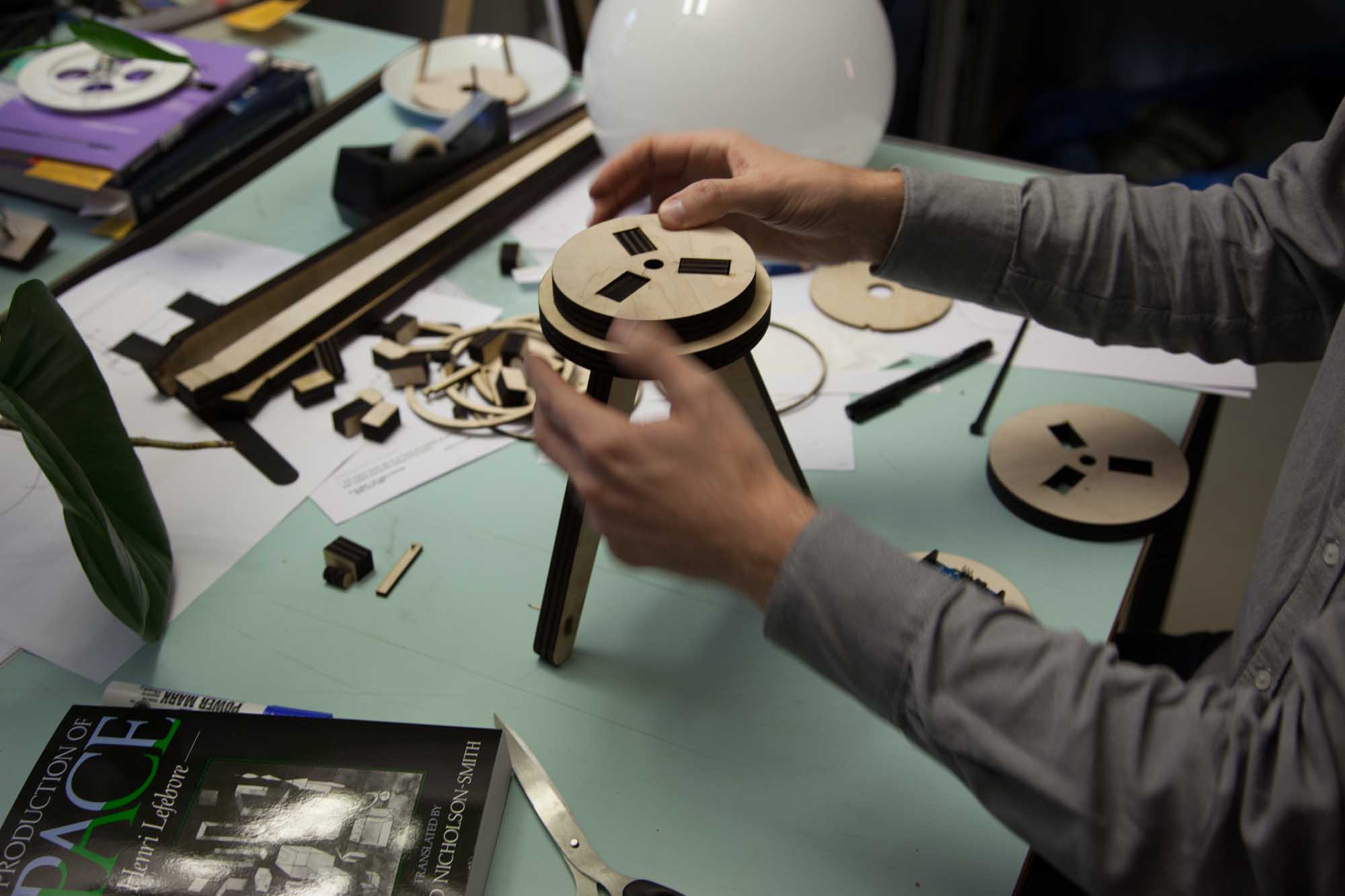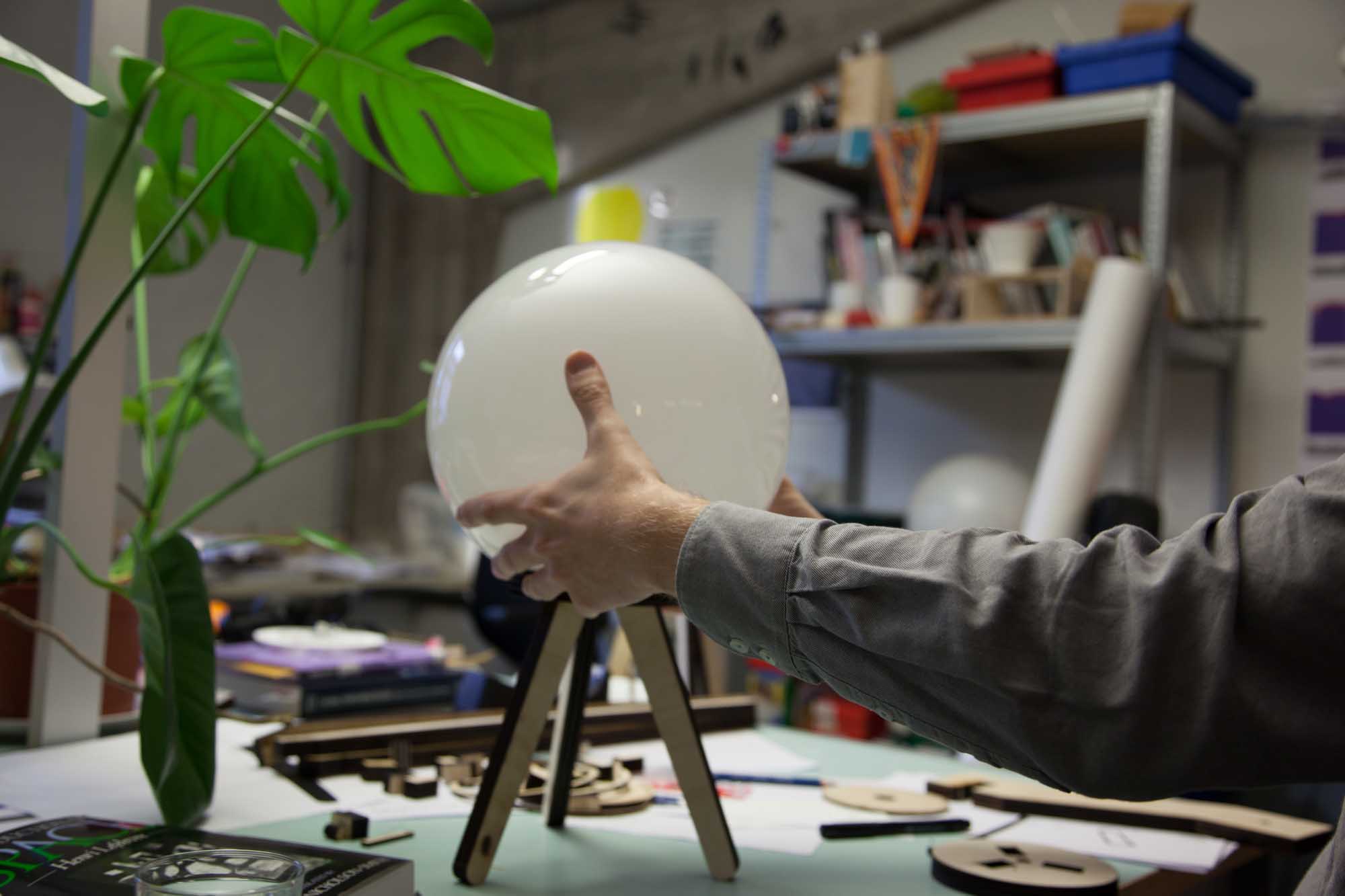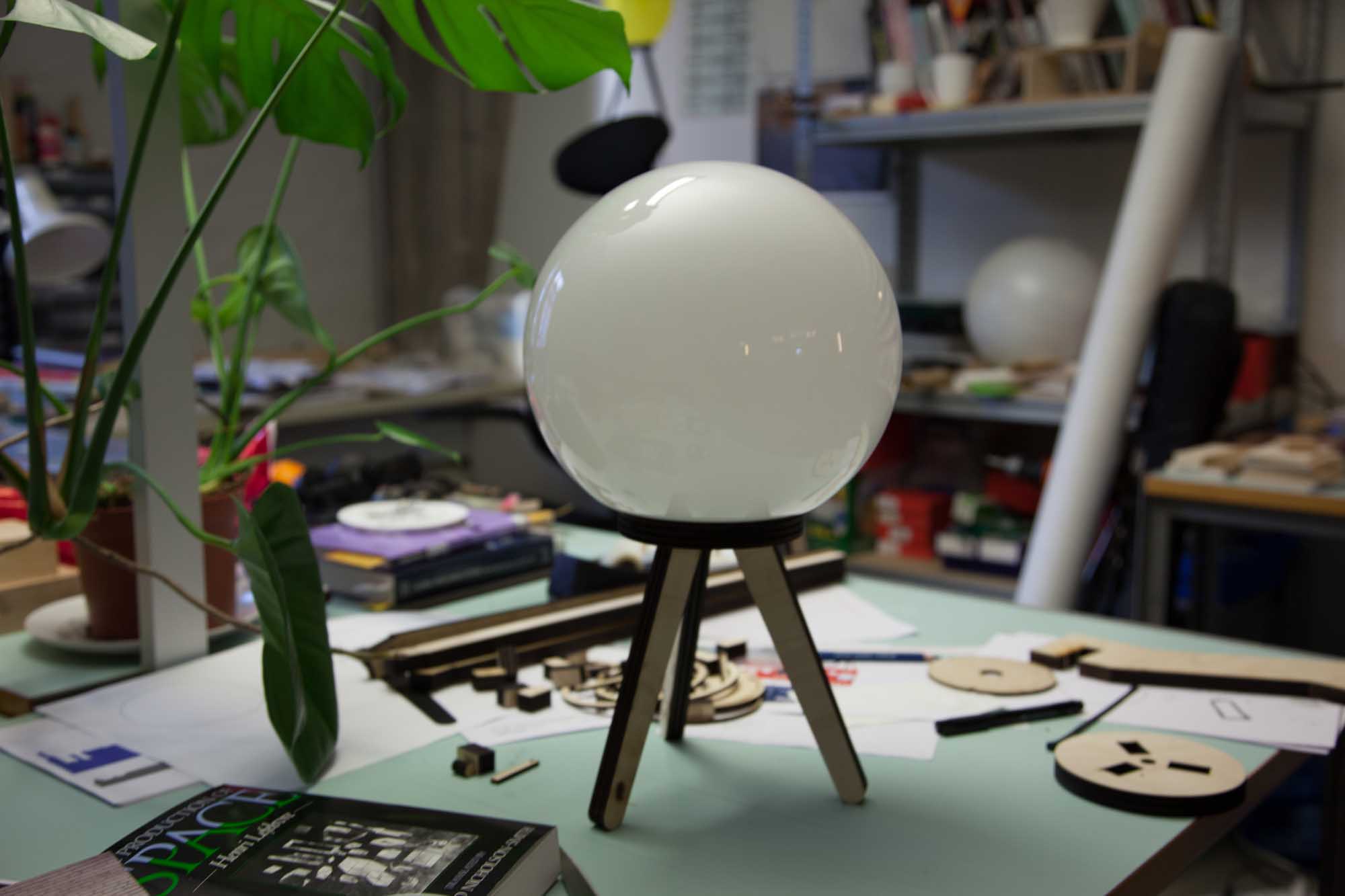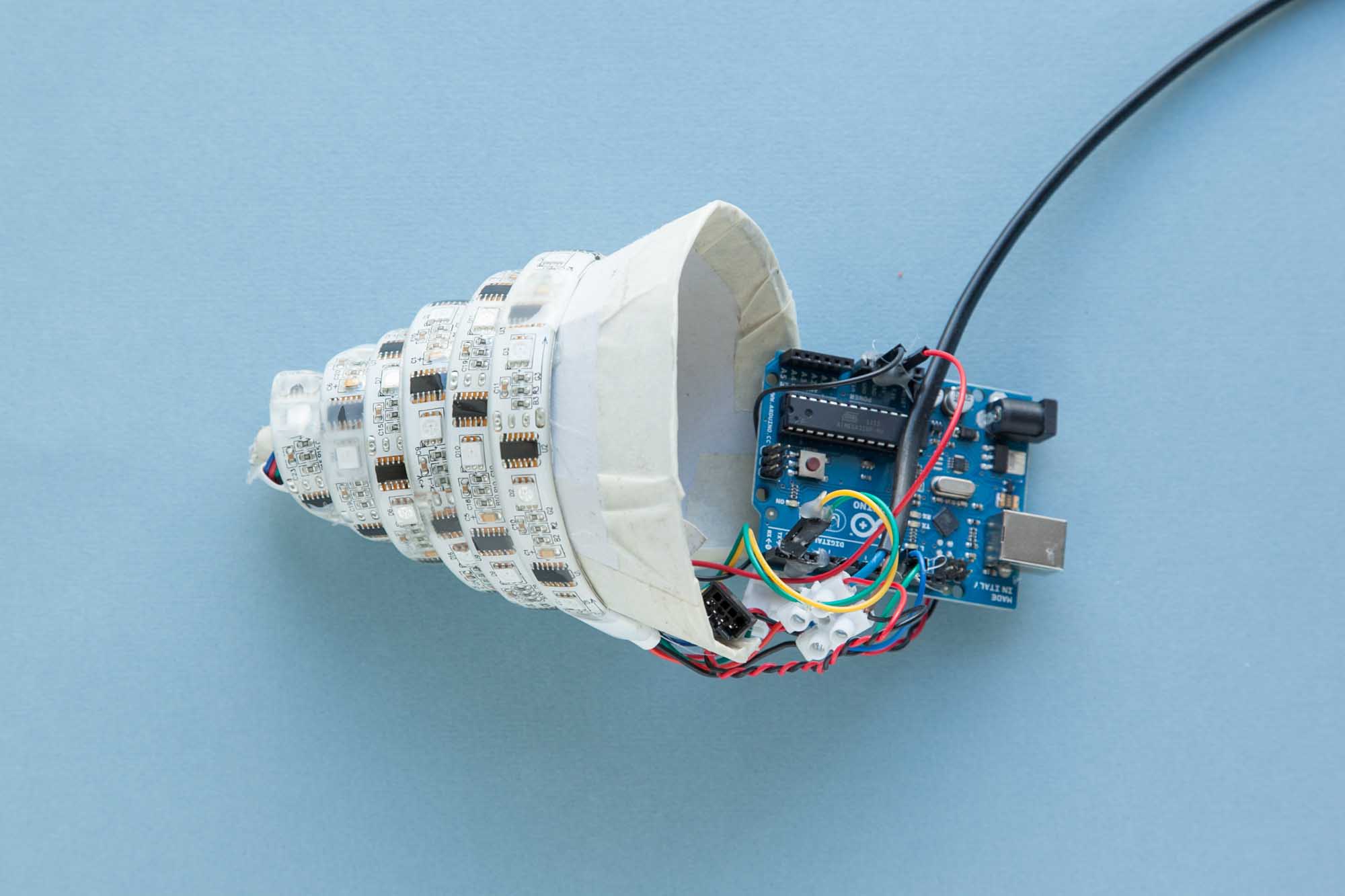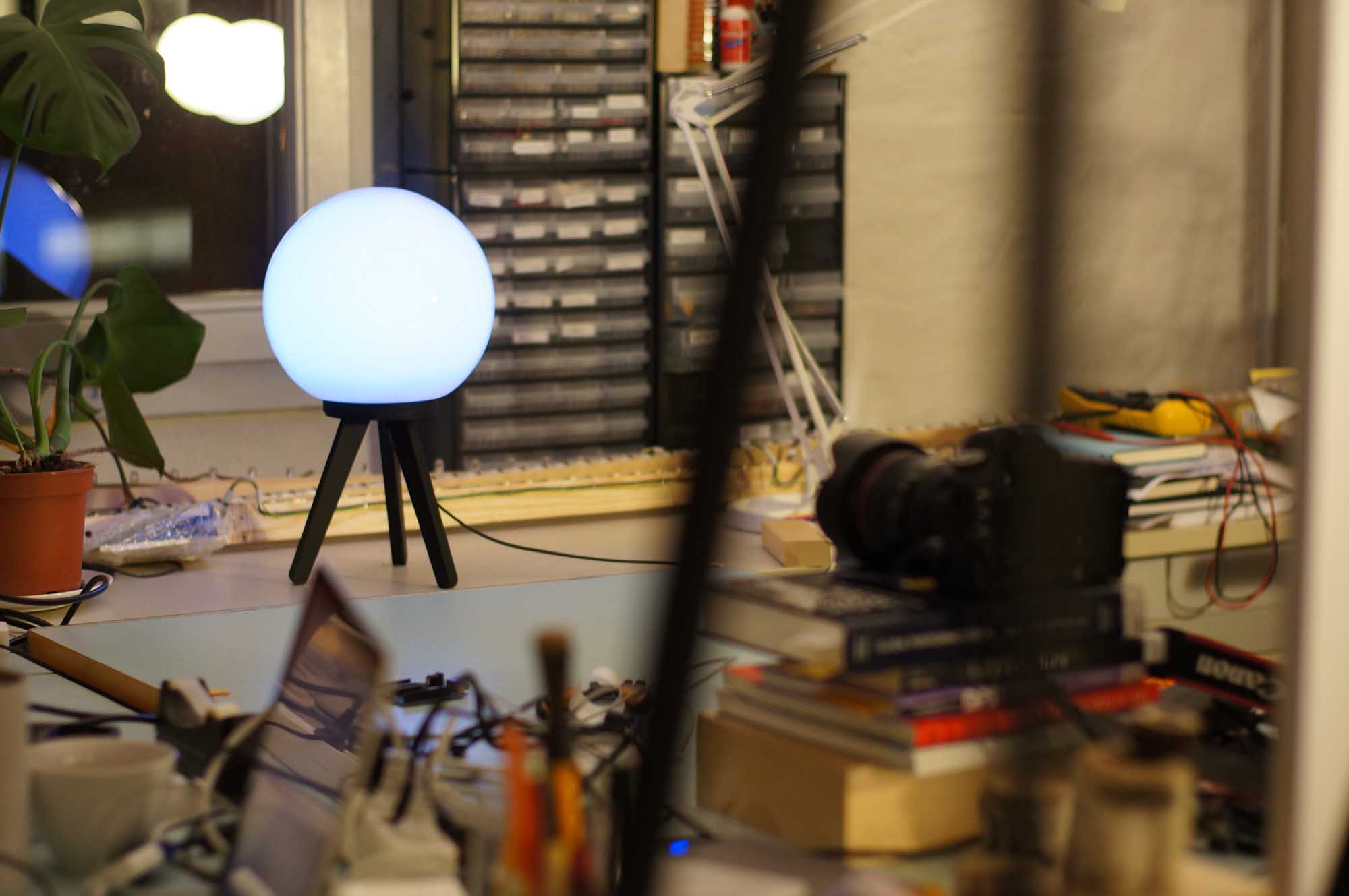CHAPTER 2.3
Product as Explanation
An instrument, product, and diagram
In this section, we take a closer look at the considerations that went into designing and producing the satellite lamps as physical objects that needed to be both functional and communicative.
Our experimentation in the previous section resulted in us taking timelapse sequences of a single point of light that visualized GPS uncertainty over time. This set up a situation where we needed to design an object, not just a sphere of light, to photograph. This object would need to work as a practical, mobile instrument, a physical product, and as a visual diagram when photographed.
Product Design
We started sketching out ideas for lamps while we were shooting the first successful timelapses above. As soon as we saw the lamp working, we started thinking of it as a product. Timelapse draws attention to the object itself, in contrast to our previous work with light painting that renders the probes invisible. The design of this object then became critical.
The first sketches were focused towards setting up a brief for the final production of these lamps. They were used to make design decisions. We summarised these decisions at the time in the following notebook entries:
The lamps have to look beautiful in photographs. They have to be sophisticated and refined. They have to look like considered instruments and furniture at the same time. (Notebook, 2012)
They can’t look like domestic products, but they should nod towards this form. Meaning, no brass and oak. No refined materials, only refined form. (Notebook, 2012)
We then moved from sketches to production, from pen and paper to vector illustrations, and eventually into electronics and laser cutting.
These satellite lamps bring together a number of product design techniques. As opposed to the first rig, or our WiFi probe, this is not just an instrument for measuring, it also works both as a standalone product and in photographs.
Visual Diagram
Primarily, the satellite lamps are products made for photography. They have a striking diagrammatic look that bears resemblance to the history of satellites. They are designed as silhouettes that are instantly recognizable across different settings. Because they have a distinct shape, they work together as multiple units. We can see that multiple satellite lamps are related, and make comparisons between their behaviors.
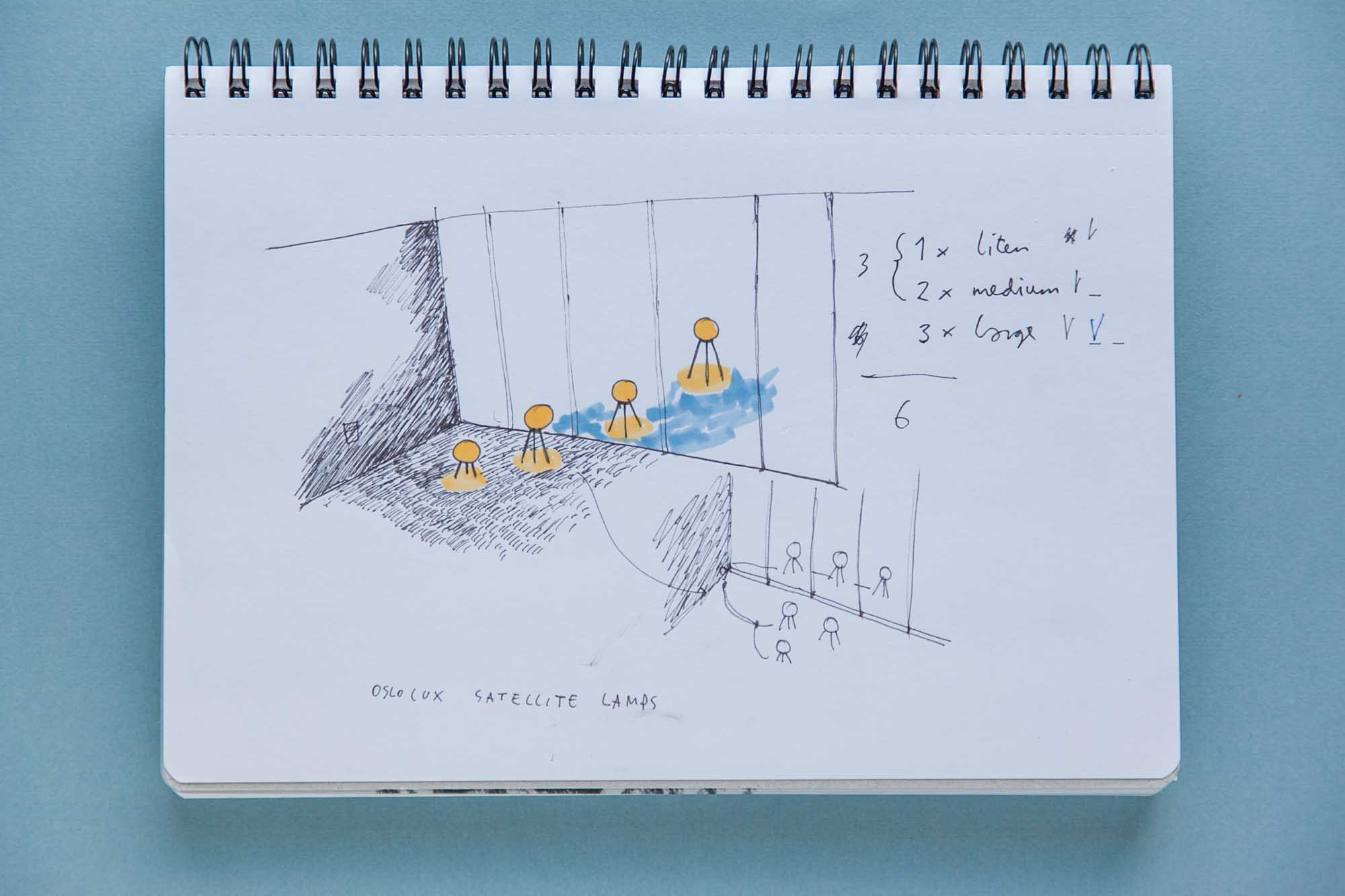
Inside Outside Sketch
As we point out above, on one level the satellite lamps are visual diagrams. Each lamp samples the uncertainty of GPS signals at a particular point in the landscape. When we take photographs and make timelapses out of a lamp, we begin to see the patterns of GPS uncertainty over time. With multiple lamps we get multiple sampling points in a photographed scene. As visualizations they then work both temporally, because the timelapse shows changes over time, and spatially, because the multiple lamps show the difference in accuracy across the space that is being photographed.
Functional and Communicative
In this section, we have looked into our processes of producing and designing the satellite lamps, and highlighted the need for them to be understood as both functional and communicative products. In explaining GPS through a physical object, we have developed a functional instrument for making the system’s accuracy visual, but we have also, in a way, materialized this invisible phenomena as a striking and recognizable form.
This has involved a series of elaborate tests in product development of the lamps and their electronics. This seemingly functional development of a product needs to be understood as a part of a larger communicative design process and articulation.
What we have shown are some of the activities involved in the development of a product suited to reveal material qualities of GPS. This is in keeping with Sharon Poggenpohl’s (2006) call for interaction design to understand the complex mix of the technological, the communicational, and the interactional.
PAGE REFERENCES
- Poggenpohl, Sharon Helmer. (2006). Interaction as an ecology: Building a framework. In Sebastiano Bagnara & Gillian Crampton Smith (Eds.), Theories and practices in interaction design (pp. 287–299). Mahwah, NJ: Lawrence Erlbaum.

